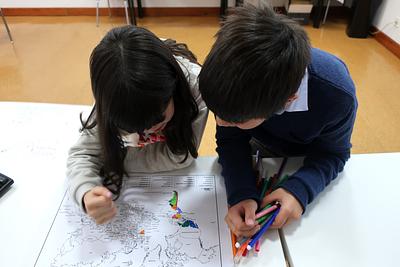According to the 2011 census(this link will open in a new window), 1.5 million people in Scotland identified as Scots speakers, with a further 267,000 reporting that they could understand the language. After English, Scots was the most widely spoken and understood language across Scotland. UK-wide, more people self-reported as speaking Scots than either Gaelic (57,000) or Welsh (562,000), making Scots the UK’s most widely spoken minority language.
Despite this, there is often misunderstanding about the status of Scots as a language. A 2010 survey of public attitudes found that many people saw Scots as ‘just a way of speaking’(this link will open in a new window) rather than a language in its own right. Scots continues to suffer from resistance to its status as a language rather than a dialect – one that is also often associated with ‘bad English’ or ‘slang’.
What is a language?
Part of this resistance may be due to biases in our perception of languages. A study in 2022 found that people were more likely to view a language as ‘legitimate’ if it was unrelated to any other language systems(this link will open in a new window). Given the similarities between modern spoken Scots and English, this would explain the continued reluctance to see Scots as a wholly separate language.
Scots and English can be considered as much separate languages as Norwegian and Danish
Yet, many languages across the world share this similarity to another language. In Scandinavia, Norwegian, Danish and Swedish speakers are often able to understand one another, though are still acknowledged to be speaking separate languages. Even aspects of Italian, Spanish and French are similar enough that in certain regions the languages are mutually intelligible. In this regard, Scots and English can be considered as much separate languages as Norwegian and Danish.
A world of multilingualism
In fact, there is also neurological evidence to support consideration of Scots as a language in its own right. Recent research(this link will open in a new window) has uncovered that our brains exhibit similar neurological functions(this link will open in a new window) when switching between Scots and English as they do when switching between two completely different languages. In other words, our brains treat speaking Scots and English the same as they would any other form of bilingualism.
Scots also shares similarities with many languages other than English alone. As a Germanic language, Scots shares features with German and many of the Scandinavian languages. For instance, the Scots word licht for light retains the German spelling and pronunciation, and the word braw seems to have more in common with the Norse or Swedish bra than it does its English translation good. In some regions, this overlap is particularly pronounced – like the significant presence of Norwegian vocabulary in Shetland. Several Scots words also have their origins in languages like French. For instance, fash meaning to get angry or bothered, remains similar to the French se fâcher. Engaging with Scots in the classroom can open up a vibrant world of multilingualism for learners.
Why does bilingualism matter?
Exposure to bilingual and multilingual environments have all kinds of benefits for learners. Research has found that bilingual children were more aware of and respectful of multiculturalism(this link will open in a new window), and that those even merely exposed to multilingual environments early on were more attuned to the perspective of another speaker than children from monolingual environments.
In connection to this, being exposed to bilingualism in childhood helps to boost the social communicative skills of children (Fan et al., 2015). Scots language education can play its own part in these factors, as well as allowing learners to better engage with Scotland’s history and culture.
Engaging with Scots in the classroom can open up a vibrant world of multilingualism for learners
There is reason to believe that teaching Scots as a separate language may too have hidden benefits. Studies have shown that where regional language varieties are taught as separate languages, it increases children’s abilities to separate and switch between them(this link will open in a new window). As the Oxford Language Report 2023–24(this link will open in a new window) highlights: "It is important to regard code-switching and speaking languages other than English at home as valuable linguistic skills, not as barriers to English vocabulary development."
There is also strong anecdotal evidence of this in Scottish schools: where Scots-speaking children are taught that Scots as a separate language they develop a greater ability to code-switch between it and English, rather than viewing their own way of speaking as ‘slang’.
This can also have benefits for children whose first language is not English. One study has already found that many Polish children in Glaswegian schools pick up Scots forms(this link will open in a new window) whilst trying to assimilate to their new environment. For such learners, it can only help their comprehension of both Scots and English for them to be taught that they are separate languages with distinct features and usages.
Acknowledging Scots as its own language and Scots speakers as bilingual is an important step in sustainably integrating it into classrooms, promoting language education and literacy both for fluent speakers and new learners.
